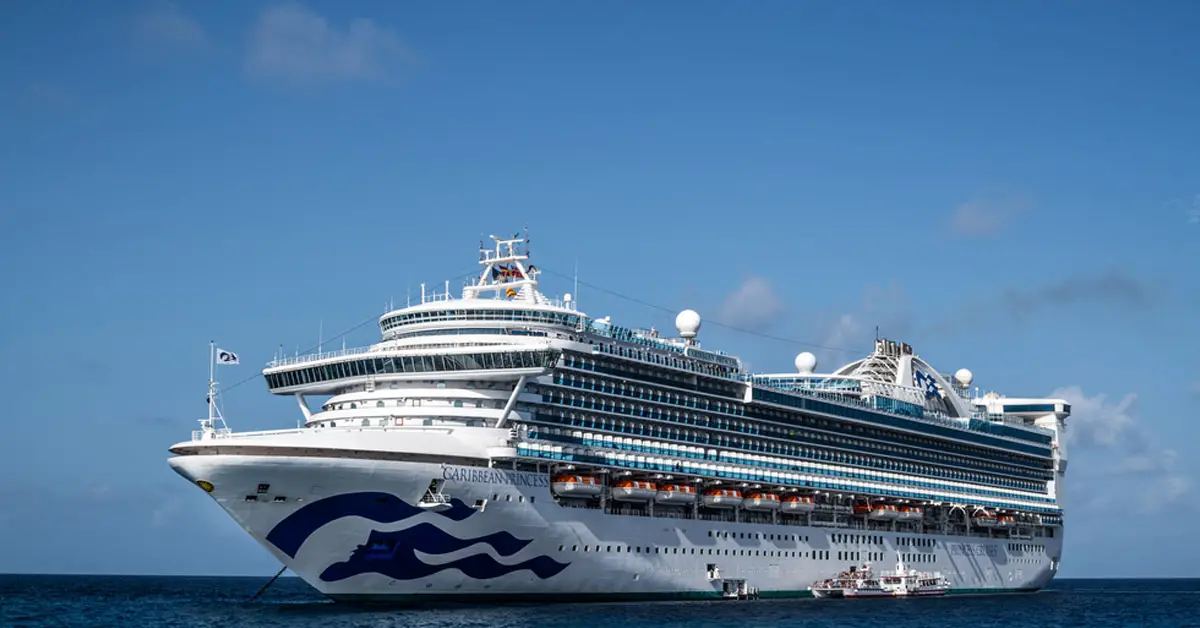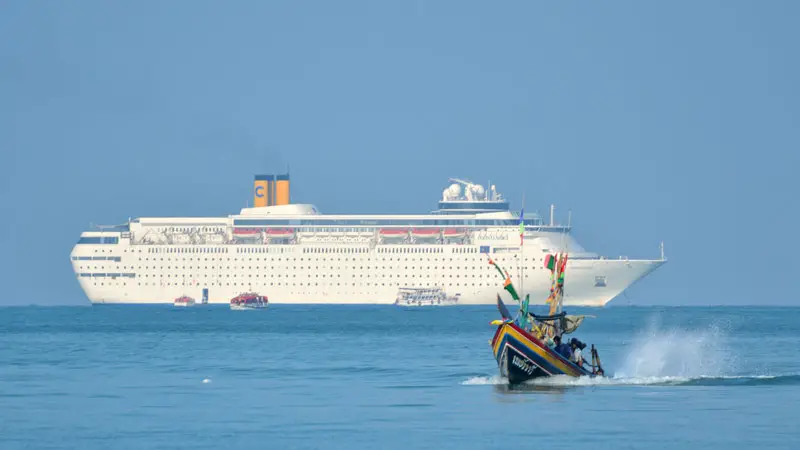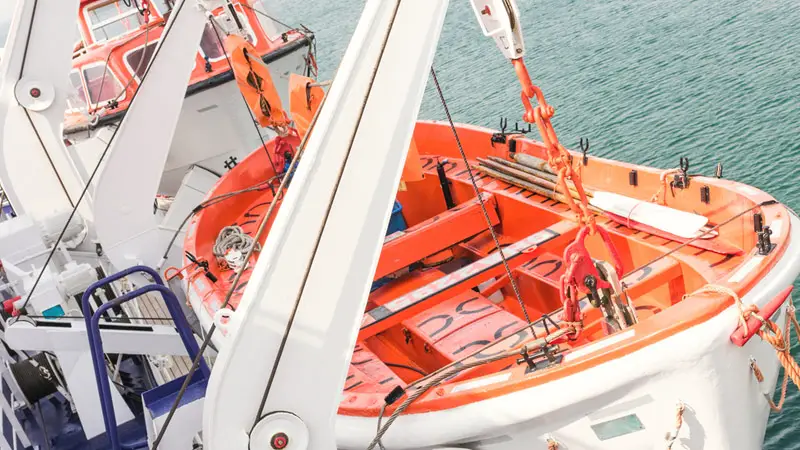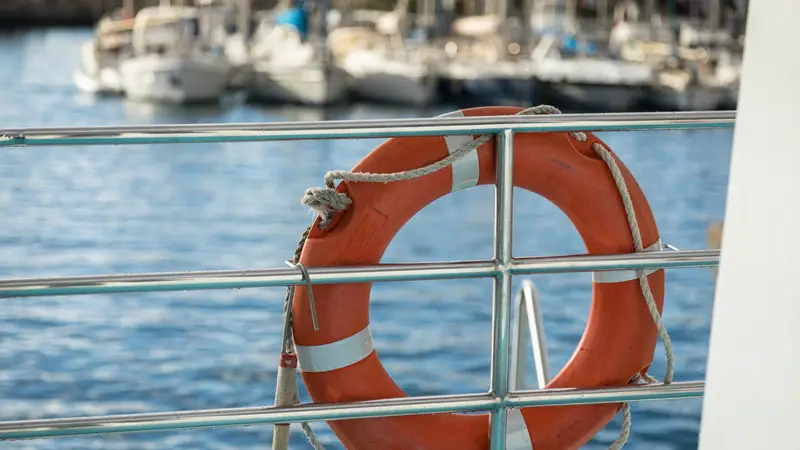

Beneath the sparkling sun, as white-capped waves break against the hull of a monumental vessel, a singular thought rests in the heart of the oceanic traveler. As they stroll across expansive decks and marvel at the maritime grandeur surrounding them, it is an intrinsic human instinct to seek assurance and peace of mind amidst this vast watery expanse.
Cruise ship lifeboats are vital safety measures designed to carry all passengers and crew in an emergency. These lifeboats are equipped with survival supplies, communication equipment, and engines to safely transport individuals from a distressed vessel.
In these moments of silent contemplation, one might find comfort not in the huge structure they inhabit but rather in the humble presence of the smaller, overlooked vessels perched quietly on the ship’s sides, holding the promise of safety.
Table of Contents
 of Lifeboats in Marine Safety" width="" height="" />
of Lifeboats in Marine Safety" width="" height="" />
Lifeboats play a pivotal role in ensuring the safety of passengers and crew aboard cruise ships. These specialized vessels are designed to provide a haven in a maritime emergency, such as ship failure, fire, or even a distressing event like a ship sinking.
The fundamental purpose of lifeboats is to preserve the lives of those aboard a larger vessel by providing a secure and reliable means of evacuation from the distressed ship to a safer location, often miles away from the source of danger. They are intentionally crafted to be unsinkable and sturdy, capable of enduring severe weather and sea conditions.
Despite the advancements in cruise ship construction and safety protocols, the sea remains an unpredictable and sometimes hazardous environment. This unpredictability underscores the importance of lifeboats. As the last line of defense in a worst-case scenario, these craft are vital for upholding marine safety.
Not only do they serve as rescue vessels, they are also equipped with necessary survival supplies, from food and water to first aid kits, thermal protective aids, and distress signal devices. Lifeboats, therefore, represent an amalgamation of safety, survival, and rescue equipment, all bundled into a single, life-preserving entity.
Modern cruise ship lifeboats reflect cutting-edge marine technology, focusing on increased capacity, enhanced safety features, and superior maneuverability. These vessels, although compact, are designed to comfortably accommodate a large number of passengers and ensure their survival during the precarious journey away from a distressed ship.

Regulations governing cruise ship lifeboats are established and enforced by international maritime bodies to ensure the highest level of safety for passengers and crew members. One of the key regulatory bodies is the International Maritime Organization (IMO), which has set out a range of safety standards under the International Convention for the Safety of Life at Sea (SOLAS).
These regulations mandate the number, capacity, and design features of lifeboats on cruise ships, alongside stipulating regular maintenance, inspection, and drill protocols. Under SOLAS, it is required that all passenger ships have enough lifeboats on each side of the ship to accommodate at least 50% of the total number of people onboard.
This means that there should be a lifeboat capacity for 100% of those on the ship. Moreover, these lifeboats should be capable of being launched with their full complement of persons and survival equipment within 30 minutes of the alarm signal. The rules also govern the construction material, visibility, stability, and other specific features of lifeboats to ensure they are unsinkable, fire-resistant, and easily detectable.
Lifeboat drills and training are integral to maritime safety procedures, preparing crew and passengers for unexpected emergencies. These exercises impart crucial knowledge about lifeboat operations, evacuation protocols, and survival tactics, ensuring individuals are ready to respond effectively in a crisis. The following points highlight the key aspects of lifeboat drills and training:

All this equipment is regularly checked and maintained to ensure it is in working condition should an emergency arise. These items, hopefully never needed, are invaluable during a maritime emergency.
The lifeboat launch and recovery process is a meticulously planned operation to ensure the safety of passengers and crew during a maritime emergency. Launch procedures begin with passengers and crew mustering at assigned assembly points, donning lifejackets, and then boarding the lifeboats.
Modern cruise ships are typically equipped with gravity davit systems, which allow lifeboats to be swiftly launched even in rough seas. These davit systems use mechanical advantages like pulleys and winches to lower the lifeboats into the water. Once in the water, the lifeboat coxswain – a crew member trained to steer the boat – navigates away from the distressed ship using the onboard engine.
Recovering a lifeboat back onto the ship after a drill or emergency is equally important and requires precision. The recovery process is usually initiated by positioning the ship to create a lee – a calm area on the downwind side of the ship, to protect the lifeboat from wind and waves.
The lifeboat is then maneuvered alongside the ship and attached to the davit cables. The davit system hoists the lifeboat from the water, aligning it with the embarkation deck. Once secure, passengers and crew disembarked safely. Both these procedures – launching and recovering – are regularly practiced by crew members to ensure efficiency and safety.
Maintaining and inspecting lifeboats are crucial elements in ensuring the safety of passengers and crew onboard a cruise ship. A well-maintained lifeboat ensures optimal performance during an emergency when every second counts. Regular checks and maintenance tasks adhere to regulatory requirements and promote the overall safety culture on board.
Routine maintenance of lifeboats includes various tasks like checking the condition of the hull, examining the engine and other mechanical components, verifying the functionality of communication devices, and inspecting the condition of survival equipment. These checks ensure that all components of the lifeboat are in good working order and ready for immediate use.
Regular inspections performed by qualified crew members are mandated by international regulations such as the Safety of Life at Sea (SOLAS) convention. These inspections, typically scheduled weekly or monthly, aim to detect and rectify any potential issues early.
Furthermore, certified service providers conduct more thorough inspections and servicing annually. This includes detailed checks on all parts of the lifeboat system, from davits to release mechanisms, and requires specialized knowledge and training.
In addition to routine checks and inspections, crew members conduct regular lifeboat drills. These exercises familiarize the crew with lifeboat operations and provide an opportunity to identify and address any issues.
Through rigorous maintenance and inspection schedules, potential problems can be identified and addressed before they become critical, ensuring that lifeboats are ready for deployment at a moment’s notice and playing a significant role in ensuring safety at sea.
Bryan is a Las Vegas resident who loves spending his free time out on the water. Boating on Lake Mohave or Lake Havasu is his favorite way to unwind and escape the hustle and bustle of the city. More about Bryan.